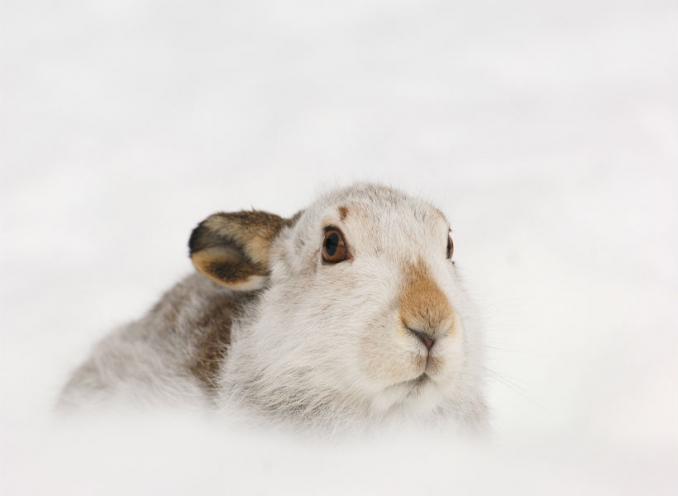Time for the Scottish to reclaim their stolen lands and protect wildlife
There has has been much reported in recent months about community groups seeking to buy the lands in which they live and those trying to reclaim lands from which their ancestors were evicted during the notorious highland clearances. Scotland has one of the highest concentrations of land ownership in Europe. It has now been estimated that fewer than 500 people own half of all privately-owned land in Scotland. The need for land reform is well overdue. It is hoped that under the Land Reform (Scotland) Act 2016, the process of land reform in Scotland following the Community Empowerment (Scotland) Act 2015, is rigorously pursued. However, landed interests are powerful, something highlighted by recent reports into the plight of Scotland's Mountain Hare.
A campaign has been underway for a number of years now to protect Mountian Hares. Seen as a true icon of our upland areas the hare is seen as an important part of Scotland's natural heritage. Now a number of wildlife groups, including the Scottish Wildlife Trust, RSPB Scotland, Scottish Wildlife Trust, Scottish Raptor Study Group, Badenoch and Strathspey Conservation Group, Cairngorms Campaign, National Trust Scotland, Royal Zoological Society of Scotland, Mammal Society, John Muir Trust and Mountaineering Scotland are appealing to the Scottish Government to introduce "urgent safeguards" to protect Mountain Hares. Culls and hunting of the animal are believed to be leading to severe population declines and potentially even local extinctions. This comes as campaigners point out that a period of so-called "voluntary restraint" of large scale culls, is being ignored. Growing evidence suggests that his period of voluntary restraint, called for in 2015, has been ignored by many in the grouse shooting industry. Some grouse moor managers clearly show no concern for the long-term viability of mountain hare populations and the same can be said for other species such as golden eagles and peregrine falcons amongst others.
This is all because of the vested interests of large shooting estates who want to remove the natural predators of pheasants and red grouse. The grouse moors are seen by them solely as a means of profit and managed for those seeking to pay to hunt grouse. The Mountain Hare is seen by them to offer a threat because they can carry ticks which may infect the grouse. But they are not alone in this and the hares themselves are being widely persecuted for sport with a number of game estates offering the opportunity to paying hunters to shoot Mountain Hares.
This campaign to save the hare and other species also raises the whole question of land ownership in Scotland. This land was actually stolen from the people of Scotland over a number of centuries and there are increasing demands that this land is returned for the benefit of all. Not only is it time for people to reclaim their stolen lands and be able to roam freely without the restrictions of present landed interests. It also makes economic sense. The economic benefit brought to local communities by those who enjoy hillwalking, climbing and seeing the native wildlife, far outweighs that brought by the large grouse moors managed solely for the benefit of a few privileged so-called “sportsmen”.
Image below: Hare from animal protection charity OneKind






